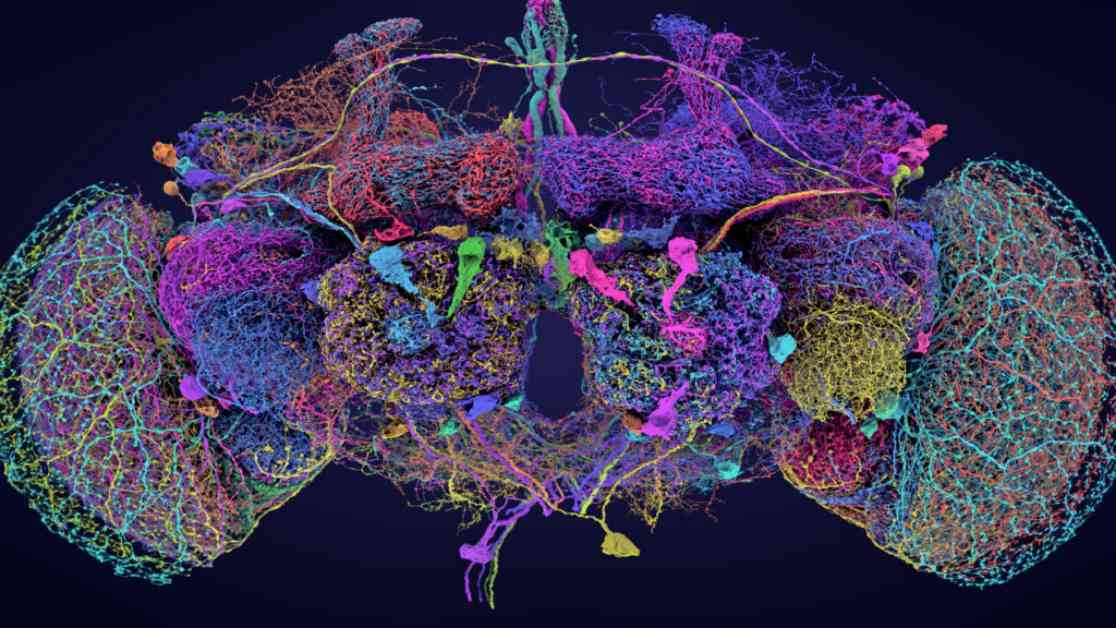Mapping the brain of a fruit fly might seem like a challenging task due to the vast number of cells and connections involved. However, nearly 50 labs worldwide collaborated to create a new neural map, or connectome, of an adult fruit fly. This comprehensive map is considered the largest of its kind and has the potential to enhance researchers’ understanding of how the brain functions.
The recently published connectome in Nature represents a significant milestone in neuroscience, with experts suggesting that it could usher in a new era of research. The detailed information provided by the connectome offers insights into the workings of neurocircuits, shedding light on processes that were once considered aspirational a decade ago.
By cataloging over 50 million connections among more than 130,000 cells, the connectome provides valuable data for studying how the brain processes information and carries out various tasks. Understanding the wiring of the brain is crucial for comprehending animal behavior and investigating neurological disorders.
Advancements in technology, particularly the use of AI algorithms, have revolutionized the process of creating connectomes. While early maps were painstakingly crafted by hand, AI now plays a significant role in generating detailed neural maps efficiently. The completion of the fruit fly connectome marks a significant achievement in a series of connectome discoveries, including those of a fly larva and a small portion of a mouse brain.
Researchers have high hopes for scaling up connectome technology to study larger and more complex brains, such as the mouse brain. While creating a complete human connectome remains a distant goal due to technical limitations, researchers are optimistic about the potential for understanding neural circuits associated with diseases like Alzheimer’s and Parkinson’s.
The data stored in a human connectome would be massive, requiring advanced imaging techniques and cost-effective reconstruction algorithms. Despite the challenges, ongoing research on connectomes of different brain regions offers promise for future disease treatments and cures. Ultimately, understanding the intricate connections within the brain is crucial for addressing circuit disorders effectively.

















